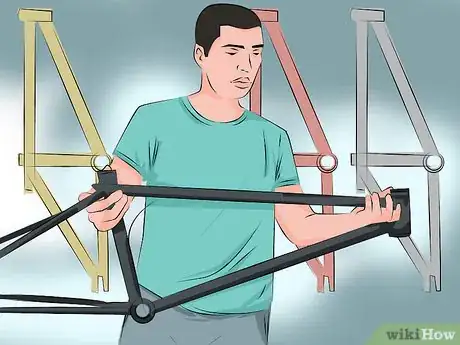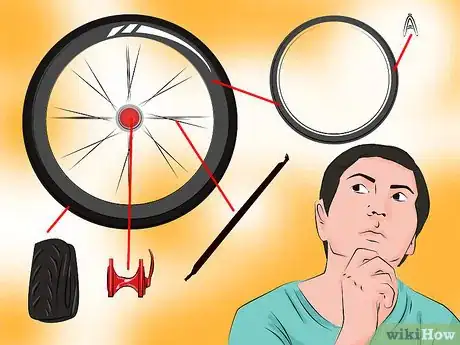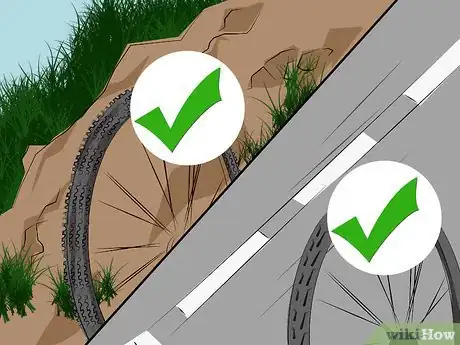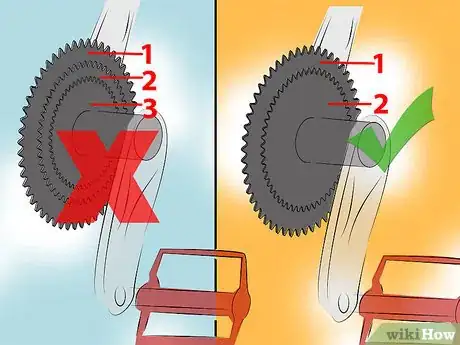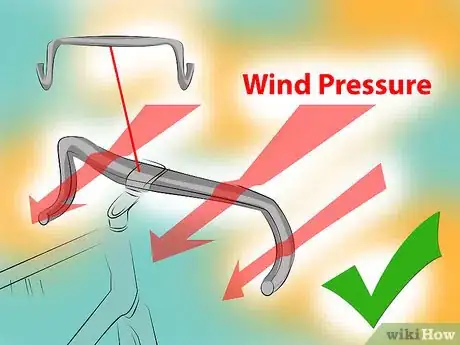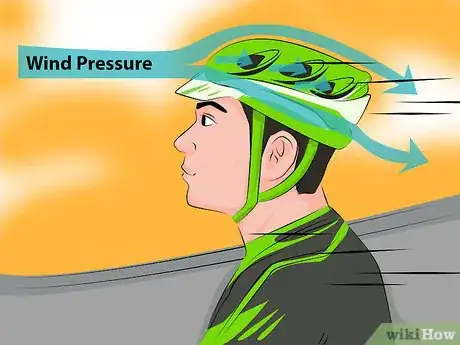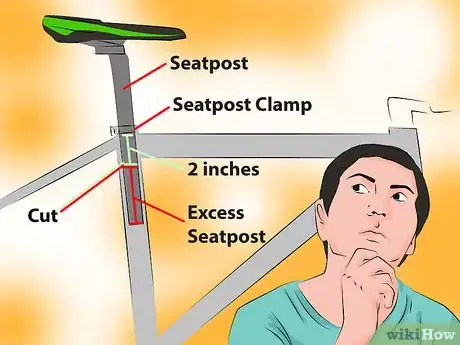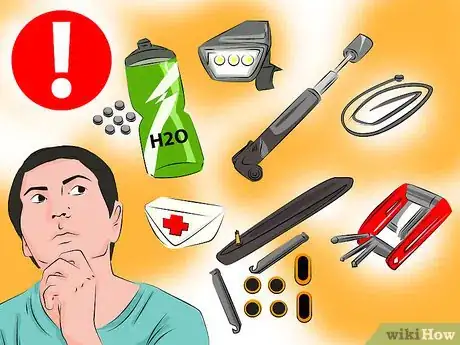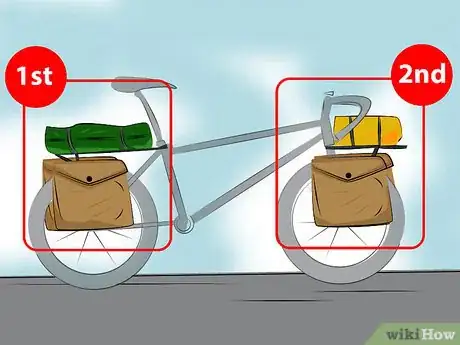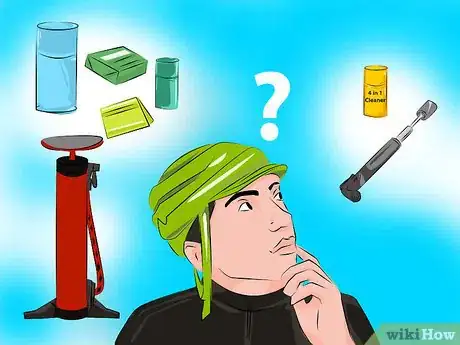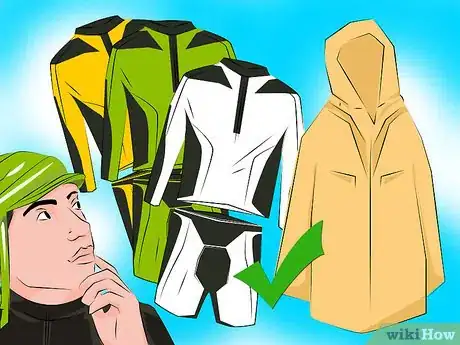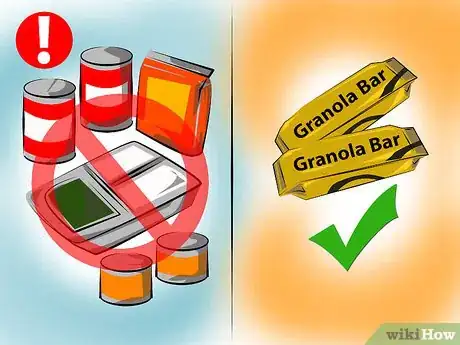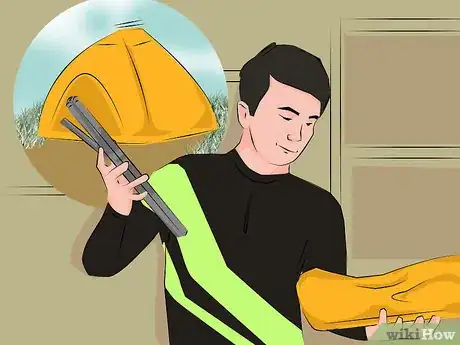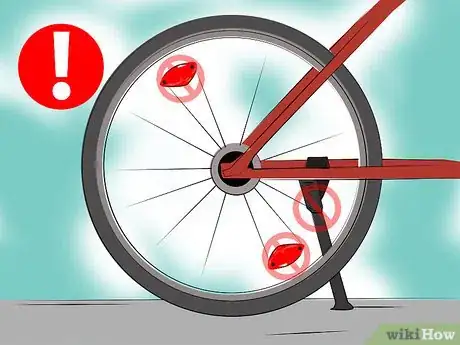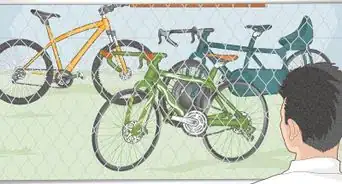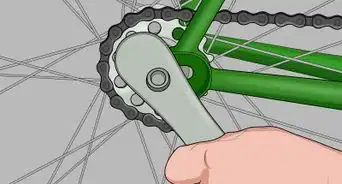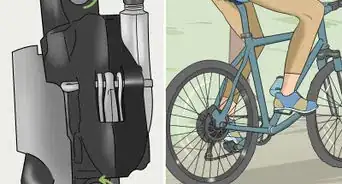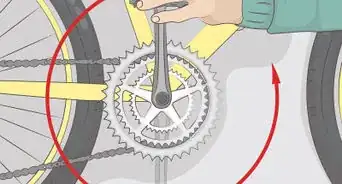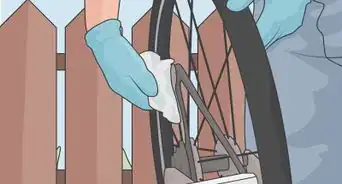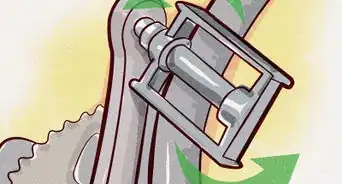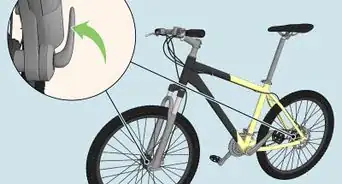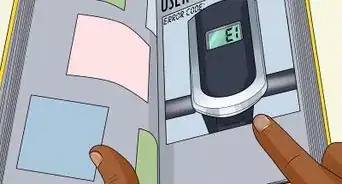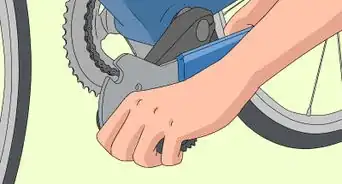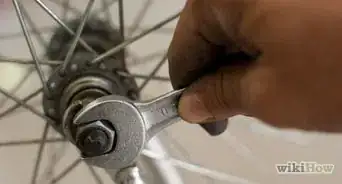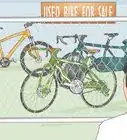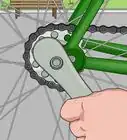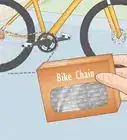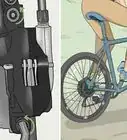This article was co-authored by Ikaika Cox. Ikaika Cox is the Shop Director at the Salt Lake City branch Bicycle Collective in Salt Lake City, Utah. He has been a bike mechanic since 2012, beginning as a volunteer with the Provo Bicycle Collective, and growing and honing his skills as a bicycle mechanic and educator in multiple Bicycle Collective locations over the years. He now leads the Salt Lake City branch of the Bicycle Collective.
This article has been viewed 237,017 times.
Getting the lightest possible bike is the goal of cyclists to help increase speeds and make it easier to travel. If you plan on decreasing weight on a road bike, you can replace the heavier parts. However, if you plan on riding a long distance, you just need to pack lightly. After you reduce the weight on your bike, you can travel with ease!
Steps
Replacing Heavy Parts
-
1Get the lightest frame you can buy when you get a new bike. The frame is the base of the bike and can be one of the most expensive parts you can buy. Getting a new frame usually means buying a brand new bike -- unless you have amazing brakes, pedals, gears, and handlebars on your old bike, it is rarely cost effective to buy a new frame and transfer everything over. When shopping for frames, there is a definite hierarchy in frame weight.
- Carbon-fiber: The gold standard for light-weight bikes, carbon fiber is unfortunately a bit brittle. You will quite often see it on mountain bikes as the technology has progressed over the years so be careful if you decide to buy a second-hand carbon bike. Racing, triathlon, and high-end road bikes are almost exclusively carbon fiber.
- Titanium: Titanium is another high-end option that has the same stiffness as steel but it’s not as dense. Titanium is often found on mountain and road bikes.
- Aluminum: Strong and light, aluminum frames are the most common frames you can buy for any bike. They can be made as light as steel but will not be as light as carbon fiber.
- Steel: Sturdy but heavy, steel is most common on old bikes, which are less concerned with lower weights. However, some custom steel bikes might still be under 20 lb (9.1 kg).[1]
-
2Switch out your wheels for easy, immediate weight loss. Perhaps the best "bang for your buck" fix is to get lighter wheels. You will not only lose weight, but you'll also become remarkably more aerodynamic. Lower spoke-count wheels and wheels made of lighter material will all help lighten your bike. What constitutes an "upgrade" depends on what you currently have, however, generally speaking, you can't go wrong with a few sure-fire light fixes:
- Steel or carbon-fiber wheels
- Tubular wheels, not recommended for anything other than racing as they require special tires that are difficult to install and replace.
- Aero wheels[2]
Advertisement -
3Make sure you're using the proper tires. Mountain bike tires, which are big and knobby, are going to kill you going up a paved hill. If you find yourself riding more roads than trails, purchase a set of commuter or "cross" tires, which are lighter, offer less friction, and can still accommodate light trails riding. Slicks are also a viable choice for light trails such as footpaths.
-
4Switch to a double crank in your front gears. Look at your chain rings, which are the big metal gears next to your right pedal. If you have three, you should consider purchasing a "compact crank," which gives you two chain rings. While you'll have fewer gears to work with, you will lose weight.
- If still want to keep the gears but lose the weight, you might compromise with an extra gear in the back, known as your cassette. That said, many riders find that, after 1-2 weeks of riding a compact crank, they forget they ever had a third ring.
-
5Pick up aerodynamic handlebars. Carbon fiber bars or specialty aerodynamic bars, like triathlon bars, will shave off weight and dampen some of the vibrations around your hands on bumpy roads. Remember, however, that carbon fiber is somewhat brittle so if you crash, be sure to get it checked at your local bike shop.
-
6Remove any unessential hardware. There are a lot of additions people put on their bike that, unfortunately, do nothing but add weight. Get rid of any unnecessary saddlebags, lights, fenders, mudflaps, pumps, decorations, and reflectors, especially if you are riding on a dry day outside of a city.[3]
- If you're going on a short ride, drop any extra water bottle cages, though you should always have at least one water bottle present unless water will be provided by the race.
- These will only shave a few grams off your total weight -- hardly worth it if you remove a bike light that will protect you on busy roads.
-
7Wear an aerodynamic pair of shoes and helmet. While this is mostly for racers, lighter, shoes and aero helmets cut down weight keep you quick, and look professional. They can get expensive, however. You can also swap out your pedals for racing pedals and wear light-weight shoes that attach to them.
-
8Consider race trimming your bike if you feel comfortable with mechanics. Not for the faint of heart, race trimming involves shaving off every possible gram of weight you can. Professional rider Jack Pullar is perhaps the most extreme example, as he ripped off the seat covering and drilled holes out of his saddle, then sawed off the bottoms of his handlebars, to lose weight. While you should be careful, some race modifications include:
- Sawing off your seat post 1–2 inches (2.5–5.1 cm) below where you have it set. Leave at least 2 1⁄2 in (6.4 cm) of the seat post in the seat tube or else you could damage your frame.
- Trimming the ends of all your cables and cable housings.
- Removing water cages and bolts.
-
9Know that you are usually saving grams, not pounds. Unless you're willing to shell out $15,000 for a high-end, pristine 11lb bike, you're not going to be losing that much weight, ever. Switching a lighter group set (your gears) and derailleur, for example, saves the equivalent weight of 1/3 of an iPhone 4. You will not notice the difference. If you're entering the Tour de France, you'll want the absolute lightest bike you can get. Otherwise, stick to a few bigger, cost-effective fixes and work on getting stronger legs, not a lighter bike.
- If you've got nice wheels and still want a lighter bike, get a carbon fiber seat or light, small pedals first. They won't make a huge difference, but they will make the bike lighter.
- Instead of spending money on a lighter bike for a minimal weight difference, try changing your lifestyle to lose body weight instead.
Packing Lightly for a Tour
-
1Understand that you should carry as much as you can safely carry on long tours. Bike touring is when you ride with all of your living requirements packed on your bike in panniers -- small bags that attach to your bike. Because you will be traveling long distances, every pound you can shave off of your bike will make a difference on your legs and lungs. The bare essentials that you should not skip on include:
- Water bottles and purification tablets.
- Hand pump.
- Extra tubes and a tube patch kit.
- Extra brake and derailleur cable.
- Bike multitool.
- Headlamp.
- First-Aid kit, especially if spending time away from cities/towns.
-
2Consider getting front panniers to distribute your weight evenly. You should always use rear panniers first, but if adding a set of front panniers will reduce stress on vital bike parts and potentially help you climb. While it will not actually lighten your bike, it will keep your back tire, frame, bike rack, and rear brakes happy and help stabilize the bike.
-
3Be smart about your accessories. Bring an all-purpose camping cleaner instead of separate dish soap, shampoo, body soap, and detergent. Bring small items you like to do to use during your downtime, such as books to read. Just be sure not to overpack them or else it will add unnecessary weight.
- While a full sized bike pump may be easier to inflate tires with, a hand-pump is much lighter.
- Instead of bringing dishes, pack a metal mess kit. You can cook with it and save leftovers inside.
-
4Get used to dirty clothes. Bike touring is not a glamorous affair, and you shouldn't expect to dress like it. You should have 2-3 pairs of bike shorts and jerseys, a lightweight rain jacket and/or pants, depending on climate, and a set of clean clothes to change into after riding. If it will be a cold night then a pair of pants, a hat, and gloves are all light and easy additions.
- Opt for wool clothing since it doesn’t retain as much much water as cotton.
- Keep one pannier for dirty clothes and one for clean clothes, and re-wear dirty stuff as often as you can before switching to something clean.
-
5Whenever possible, buy food day-by-day. Unlike back country hikers, clever tour bikers don't have to carry all of their necessary food supplies on their back each day. If you plan your tour to run through at least one town every 1-2 days, you can cut down a ton of weight by purchasing your meals late in the day. If you stop near or in a town each day, buy that night's dinner and the next day's breakfast and check a map. If you'll be in a town sometime early the next day, buy lunch later and eat it on the side of the road, then repeat the next day.
- Make sure you always have 3-4 high-carbohydrate riding snacks (granola/protein bars, fruit, dried cereal, etc.) on hand. When biking long distances you need to eat something every 30-60 minutes.
- Always have one lightweight "emergency meal" available in your bag. Granola, dried rice or pasta, beans, etc. in case you cannot find a place to stop.
- You can also try to forage for food whenever you stop.
-
6Invest in lightweight camping equipment. The same lessons learned by backpackers, who carry everything they need on their backs, can help you keep weight off your wheels. Lightweight tents, sleeping bags, and sleeping pads may not be quite as essential for a biker, but they will still make a big difference. Every camping brand offers light-weight variations on their equipment, but here are some hints for making do with the best you've got.
- Instead of bringing a tent, just bring a tarp and a collapsible pole that you can fashion into a shelter.
- Foam pads, including foam mattress toppers for twin beds in a pinch, are incredibly light, though they may be bulky.
- Use the lightest-weight sleeping bag you can get. If you're touring the California coast in the summer, for example, your 0-degree bag is likely too heavy for your needs.
-
7Get rid of the minor stuff. If you’re serious about really making your bike as light and efficient as possible, all the little safety/convenience gear can be stripped. Don’t bring a cycle computer or your cell phone if they add too much weight.
- Be smart when packing -- will you really read 3 books on the trip? Do you need the pair of nice, heavy jeans, "just in case?" Touring is about living simply and enjoying the scenery as you ride, not packing your entire life on a bike.
- Never remove reflectors from your bike since they help other drivers see you.
Community Q&A
-
QuestionHow can a steel bike be made lighter?
 Matt GanderCommunity Answerbikes with steel frames cannot really be made lighter. There are options to change things like the wheels, handlebars, pedals and so on but lighter components are usually very expensive.
Matt GanderCommunity Answerbikes with steel frames cannot really be made lighter. There are options to change things like the wheels, handlebars, pedals and so on but lighter components are usually very expensive. -
QuestionHow do I make a normal cycle into a mtb?
 Paul SCommunity AnswerIt can be done, but the cost of components needed vs. just purchasing a mtb is something to think about. Mtb's need more aggressive and wider tires and tubes, more durable rims, flatter bent handlebars, and some form of suspension or shocks, at least in the front forks. Mtb's shine with their ability to handle bumps and rough paths, while having a wide range of gears for any incline. Just adding mtb components to a hybrid or road bike will not always be best, as a bike design starts with the frame intended for certain terrain and style of riding.
Paul SCommunity AnswerIt can be done, but the cost of components needed vs. just purchasing a mtb is something to think about. Mtb's need more aggressive and wider tires and tubes, more durable rims, flatter bent handlebars, and some form of suspension or shocks, at least in the front forks. Mtb's shine with their ability to handle bumps and rough paths, while having a wide range of gears for any incline. Just adding mtb components to a hybrid or road bike will not always be best, as a bike design starts with the frame intended for certain terrain and style of riding.
Warnings
- Check local laws before removing safety items such as reflectors, as these are required in some areas⧼thumbs_response⧽
- However, you should never remove any safety equipment if you are touring (multiple days). If you are a road racer, front and rear lights will not make any difference in your performance but it will keep you safer.⧼thumbs_response⧽
